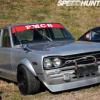Diy Head Port And Polish
Announcements
-
Similar Content
-
Latest Posts
-
After drying a few days, time to put her back together
-
By Watermouse · Posted
Ahh ok, thanks again for your valued insight Tao -
The hot exhaust light will come on not from just the cat being blocked, but it's just a temp sensor, and it's designed to warn you to not do things like park in long grass. If you've been pushing the motor a bit, it can cause the light to come on. Second if the cat is rattling, I'd suspect it's not blocked, but instead falling apart inside. The easiest "fix" until you can get a cat put back in, is to unbolt your one, bash the rest of the insides out, and then bolt it back in. For a daily driver/street car, I am in agreeance of put a cat in the car. If it were race car I wouldn't care if it were removed.
-
No worries at all 🫡 I think the most satisfying things to make are the little bits that are just impossible to find or they're no longer manufactured. Generally I always try to replace parts with OEM wherever possible. This little project is also great because it'll never see the light of day, but strengthen these brackets so it's not just relying on the little standard screws in the headlight plastic. As soon as I saw the standard brackets and screws I thought, "well I'm not going to install with just the screws, the plastic tabs will just snap off". It's crazy how expensive everything has become yeah. But I suppose that's supply and demand; granted it's a lot easier to get brand new genuine parts these days which is fantastic 😊, I don't have to get totally reamed at the local Nissan dealer ha ha We sure are lucky we have all these manufacturers making parts these days, a few really great Australian companies too like Platinum Racing Products and Fit Mint Automotive, what a time to be alive ❤️ . I've got my eye on the RB26 head by PRP as mine has a very fine hairline crack, so that'll need to be addressed some time in the future. If you have any requests or odd things to make feel free to let me know and I can have a crack at making replacement parts ✌️
-
Thanks for sharing this, and BTW if your headlights are in good condition they are worth thousands....you might want to consider replacing them with brand new LED ones like this (https://www.nengun.com/78works/full-led-headlights-r32-skyline) and making enough profit to buy a house in Sydney
-







Recommended Posts
Create an account or sign in to comment
You need to be a member in order to leave a comment
Create an account
Sign up for a new account in our community. It's easy!
Register a new accountSign in
Already have an account? Sign in here.
Sign In Now